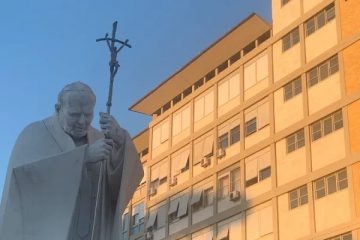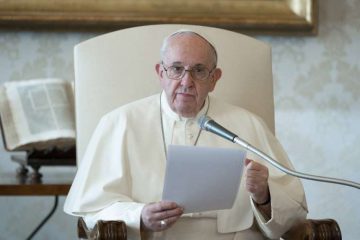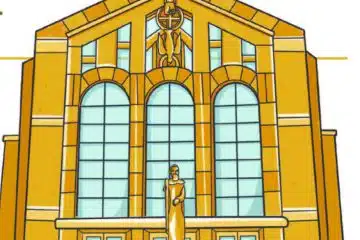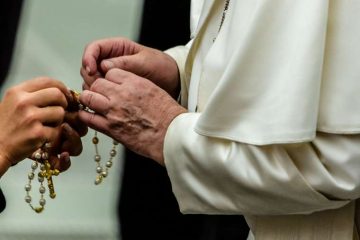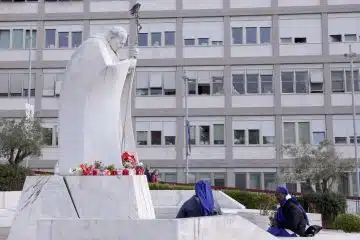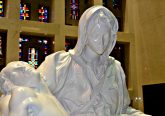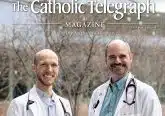Throwback Thursday: The CT is 184 today; Here’s why we were founded
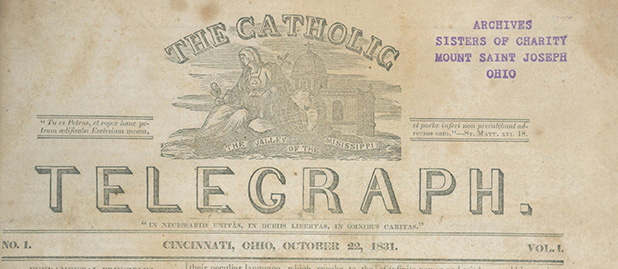
Staff Report
Today (Oct. 22, 2015) marks 184 years since the founding of The Catholic Telegraph newspaper by Bishop Edward Fenwick and the staff is proud to continue the tradition of bringing you news and commentary from a Catholic perspective.
The following editorial, for lack of a better word, is long and the language belongs to another time. The Catholic Telegraph was founded in a nation at times hostile and skeptical of the Catholic faith for the purpose of explaining and defending it. 184 years later, a need for such a publication still exists.
With that, please enjoy the following exhortation, written by our first editor, Father James I Mullon.
“In presenting the first number of the Catholic Telegraph to the public, it is our sincere wish that it may answer the expectations of those who have favored it with their patronage. That it should pass without censure, among those who are in the habit of inveighing against the Catholic faith, is more than we have reason to promise ourselves. We expect their opposition, and are prepared to meet it in a firm and temperate manner. We do not wish to provoke controversy; but we shall never shrink from it, when our silence would be detrimental to the cause of religion and truth.
The primary object, in issuing the Catholic Telegraph, is to aid in diffusing a correct knowledge of the the Roman Catholic faith. By doing this, we are conscious of discharging a two-fold duty; namely, “of contending earnestly for the faith once delivered to he saints;” and of removing some of the difficulties which prevent our dissenting brethren from rendering that justice to the ancient faith, which a correct knowledge of its tenets would, generally, lead them to concede.
So long as the mind is held under the influence of prejudice, or decided in favor of preconceived opinions, it is disqualified for the sober and impartial investigation of truth. The result of examination, on fair principles, is equally, if not more unfortunate, when the sources, from which the information is to be derived, have been vitiated.
Strict attention shall be paid to state truth, fully and fairly in the columns of the Catholic Telegraph. Truth has nothing to fear, while it must acquire new lustre, from impartial scrutiny. It is powerful and will prevail. It is the semblance of truth, the specious counterfeit that shrinks from investigation; which succeeds only by eluding observation; but as soon as it falls under the inspection of the discriminating eye its detection is inevitable.
Among the various questions which, at this time, engage the attention of men, none should possess a higher degree of interest that that which has for its object, the examination of religious truth. For, in a religion, founded on mysteries above the comprehension of man, and in which he is enjoined implicitly to believe, it is important to know the ground on which his stands, and that he be well acquainted with the motives of his belief. To be convinced by his own reason, to be satisfied, that he cannot justly refuse his assent to divine truths, however mysterious they may seem, cannot be a matter of indifference: every sincere believer must consider this an object the most serious concern. Where doubt is a crime, conviction cannot be too deeply impressed, nor faith too strongly confirmed.
To arrive at the truths of revealed religion, man must be directed in his progress by evidence; and that evidence must be such as that it cannot expose him to the danger of being deceived. Upon this principle, the Catholic receives the articles of his creed, attested by the countless millions who have peopled the Christian world, for eighteen centuries. When interrogated by those who dissent from him, respecting the genuineness of his belief, he produces the evidence which, every where, testifies in its favor, namely, Churches, Liturgies, Councils, the consent of nations, and various other records of the faith and practice of each preceding age, till he reverts to the divine, “Author and Finisher of our Faith.” He shows how admirably the whole system harmonizes with what is obtained in the written word; because his fathers have taught him the correct meaning of those difficult and mysterious pages, as they were explained by the Apostles of Christ.
By proceeding in this manner, his object is, “to be wise unto sobriety,” and to avoid the great difficulties which arise from rejecting such respectable and important testimony. He justly finds fault with those, who, paying no regard to the weight of evidence on which his faith reposes, indulged in acrimonious invectives and contumelious reproaches against his belief.
The very means resorted to by the great body of our opponents, is a strong proof in favor of the Roman Catholic faith. They assail by speculation; we always answer by facts. They have left no means untried, to prove the Catholic Doctrine to be the offspring of Ignorance, Superstition and Folly; but have not been able to state the time when this spurious procreation first appeared in the religious world; nor the persons to whom it owes its birth. The great controversy would be put to rest by producing satisfactory evidence of these simple facts. But we look in vain, into the pages of impartial history for the record of an event so momentous to the world at large; and the only recompense we receive for our trouble, is, assertion for proof, and contradictory statements for decisive testimony. We can know the names of the various individuals who have introduced any innovation, — from the Simonians to the Mormonites, — but we can find no trace of the introduction of any one article of Roman Catholic Faith, subsequent to the days of the apostles. It is not possible that such an occurrence, involving the deepest interest of the christian world, could have taken place without the knowledge of those, in whose time the novelty was proposed.
The Roman Catholic faith, is the faith of nearly ONE HUNDRED AND SEVENTY MILLIONS of the present generation. This immense multitude is composed of “all nations, and tribes, and people, and tongues.” They are dissimilar in their manners and habits; they are often influenced by opposite and conflicting interests; but, on the subject of their faith, their unison resembles the harmony of the heavenly bodies, whose light is not the less, though clouds and vapors sometimes interpose to obscure the vision of mortals. To every unprejudiced mind, it must appear, inconsistent, to reject the united testimony of some may millions, to favor the opinions of a comparative few, who differ as widely from each other as they do from the great body from which they have seceded.
The Divine Founder of Christianity left his power and authority on earth; he promised his constant protection to the members of his church, and prayed that they might be cemented together, in a manner, similar to the mysterious union between himself and the Eternal Father. Must we so be left in darkness and ignorance respecting these truths , when the word of Eternal Truth is pledged for the contrary? We answer No; and we shall endeavor, in the Telegraph, to produce satisfactory evidence of the fact.”
Welcome to The Catholic Telegraph’s edition of Throwback Thursday. Throwback Thursday is a weekly online activity wherein users of social media share an old photo or anecdote about times gone by. We use Throwback Thursday to highlight the history of the Archdiocese of Cincinnati, and our publication.
Recent Throwback Thursdays
Supporting the Missions, then and now
Journalism education starts earlyOne more look at the papal visit
Make a newspaper into a papal miter
A glance at past papal pilgrimages
Did Cincinnati almost get a papal visit?
Posted Oct. 22, 2015




